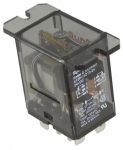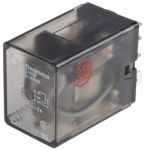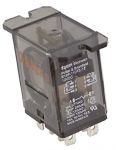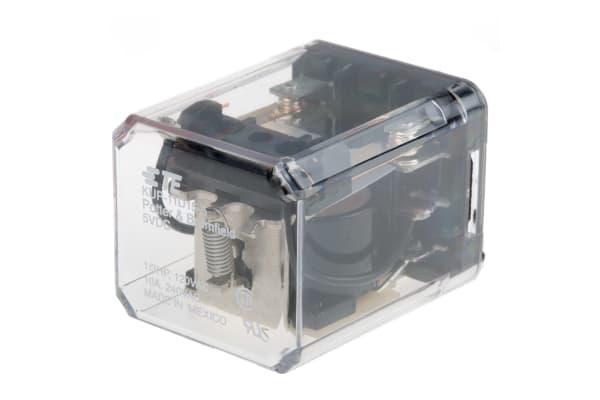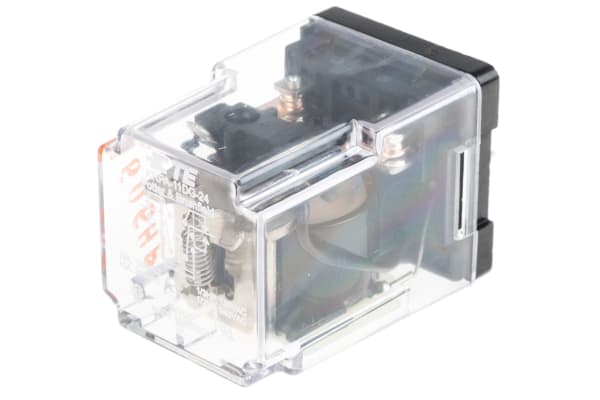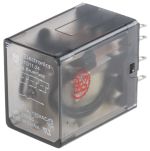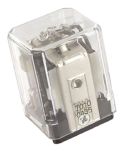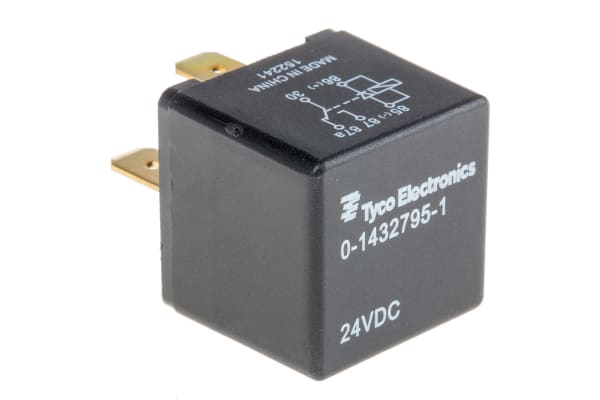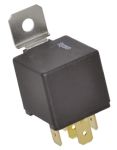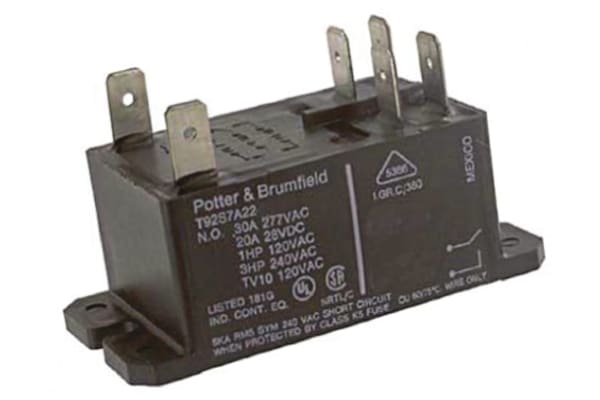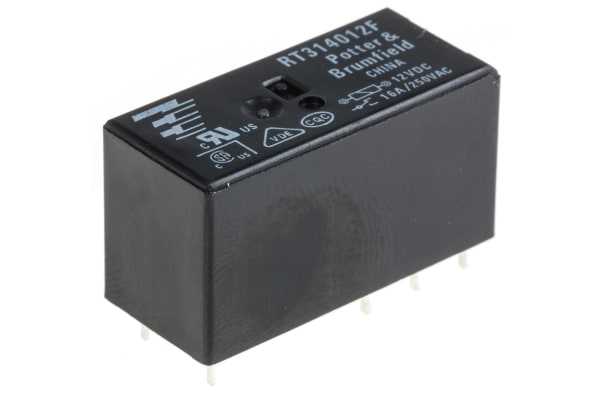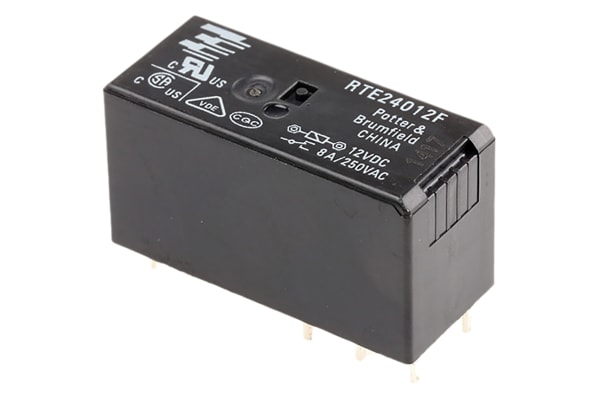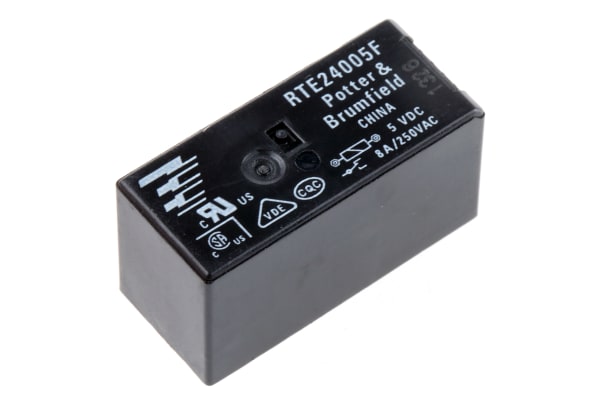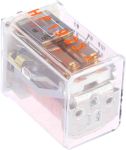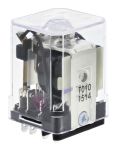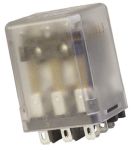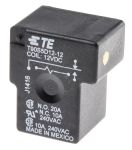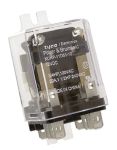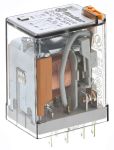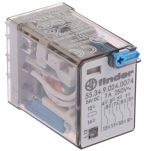Non-Latching Relays
Relays are electrical switches that are operated by electrical impulses with the primary function to open and close a circuit, they can also be referred to as industrial switches. There are 2 main types available, latching and non–latching relays.How do non-latching relays work?Non-latching relays are in a normally closed (NC) position and will stay in this state without power. When power passes through the circuit, the relay switched to a normally open (NO) position by using an internal coil to generate a magnetic force, holding this NO position. Once the current is turned off, it returns to the NC position. This makes non-latching relays well suited to push-button applications like keyboards and micro-controller input buttons.What are non-latching relays used for?Non-latching relays are highly durable and versatile components, making their performance long lasting and suitable for use in a wide range of applications, such as:Automotive enginesHousehold appliancesIndustrial machineryMedical equipmentTelecommunications equipmentWhat is the difference between latching and non-latching relays?Both types of relays in similar in design and function, however, a significant difference between them is that a latching relay will remain in the last position it when it was last powered, whereas a non-latching goes back to its normal position. This makes each more type of relay suitable for different applications. Considerations when selecting a relayWhen choosing a relay, it is important to consider a number of specifications to ensure it is fit for purpose, some factors include:Coil voltage – the required voltage to actuate the switching mechanism. If a voltage is too high this could damage the components, if it is too low then it will not actuate. Contact configuration – This is the state the contacts are in without power. For example SPST, single pole single throw.Contact material – the relay contacts are available in many materials that have certain properties. Common materials are gold, silver, tin oxide and nickel Coil power – the amount of power (watts) the coil operates at. This must match the power in the circuit for correct function. Coil resistance – the amount of resistance (ohms) in the circuit that the coil creates.
-
TE Connectivity, 24V Coil Non-Latching Relay DPDT, 15A Switching Current Panel Mount, 2 Pole, K10P-11DT5-24
IDR522,981.54 -
TE Connectivity, 24V Coil Non-Latching Relay DPDT, 15A Switching Current Plug In, 2 Pole, K10P-11D15-24
IDR256,456.05 -
TE Connectivity, 12V dc Coil Non-Latching Relay DPDT, 15A Switching Current Panel Mount, 2 Pole, K10P-11DT5-12
IDR274,497.13 -
TE Connectivity, 5V dc Coil Non-Latching Relay DPDT, 10A Switching Current Plug In, 2 Pole, KUP-11D15-5
IDR280,056.30 -
TE Connectivity, 24V Coil Non-Latching Relay DPDT, 10A Switching Current Plug In, 2 Pole, KRPA-11DG-24
IDR387,883.22 -
TE Connectivity, 24V dc Coil Non-Latching Relay 4PDT, 3A Switching Current Plug In, 4 Pole, KHAU-17D11-24
IDR235,163.38 -
TE Connectivity, 24V Coil Non-Latching Relay 3PDT, 15A Switching Current Plug In, 3 Pole, KUMP-14D18-24
IDR430,993.01 -
TE Connectivity, 24V dc Coil Automotive Relay SPDT Plug In Single Pole, 1432795-1
IDR49,508.08 -
TE Connectivity, 12V dc Coil Automotive Relay SPDT Panel Mount Single Pole, 1432793-1
IDR444,209.15 -
TE Connectivity, 12V dc Coil Non-Latching Relay SPDT, 20A Switching Current PCB Mount Single Pole, T9AS5D12-12
IDR77,723.49 -
TE Connectivity, 24V Coil Non-Latching Relay DPNO, 30A Switching Current Panel Mount, 2 Pole, T92P7A22-24 6-1393211-0
IDR349,178.81 -
TE Connectivity, 115V dc Coil Non-Latching Relay DPNO, 30A Switching Current Panel Mount, 2 Pole, T92S7A22-120 1393212-2
IDR315,718.90 -
TE Connectivity, 12V dc Coil Non-Latching Relay SPDT, 16A Switching Current PCB Mount Single Pole, RT314012F
IDR66,605.15 -
TE Connectivity, 12V dc Coil Non-Latching Relay DPDT, 8A Switching Current PCB Mount, 2 Pole, RTE24012F
IDR70,800.75 -
TE Connectivity, 5V dc Coil Non-Latching Relay DPDT, 8A Switching Current PCB Mount, 2 Pole, RTE24005F
IDR87,688.04 -
TE Connectivity, 24V Coil Non-Latching Relay DPDT, 5A Switching Current, 2 Pole, R10-E1X2-V700
IDR902,473.56 -
TE Connectivity, 24V dc Coil Non-Latching Relay 3PDT, 10A Switching Current Plug In, 3 Pole, KUP-14D15-24
IDR380,960.48 -
TE Connectivity, 120V ac Coil Non-Latching Relay 3PDT, 10A Switching Current Plug In, 3 Pole, KUP-14A15-120
IDR424,070.27 -
TE Connectivity, 12V dc Coil Non-Latching Relay SPDT, 20A Switching Current PCB Mount Single Pole, T90S5D12-12
IDR191,948.70 -
TE Connectivity, 12V dc Coil Non-Latching Relay DPDT, 20A Switching Current Panel Mount, 2 Pole, KUHP-11D51-12
IDR436,552.18 -
TE Connectivity, 12V dc Coil Non-Latching Relay DPDT, 30A Switching Current Panel Mount, 2 Pole, T92S11D22-12
IDR379,806.69 -
Finder, 110V ac Coil Non-Latching Relay 3PDT, 10A Switching Current Plug In, 3 Pole, 55.33.8.110.0010
IDR207,262.64 -
Finder, 230V ac Coil Non-Latching Relay 4PDT, 7A Switching Current Plug In, 4 Pole, 55.34.8.230.0054
IDR227,506.41 -
Finder, 24V dc Coil Non-Latching Relay 4PDT, 7A Switching Current Plug In, 4 Pole, 55.34.9.024.0074
IDR208,940.88



